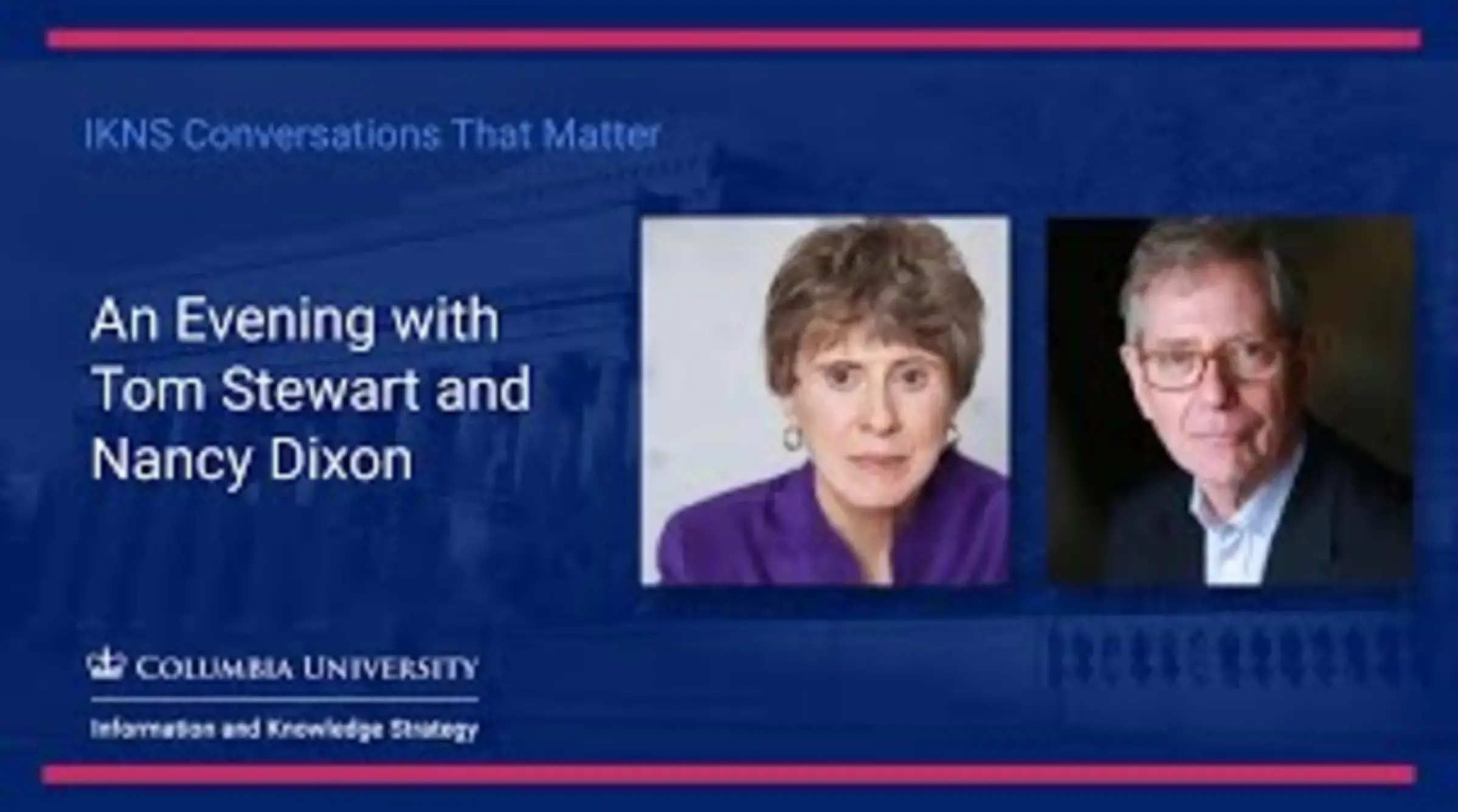Recently, Tom Stewart, former Editor-in-Chief of Harvard Business Review and now Chief Knowledge Officer of AchieveNEXT, and Nancy Dixon, Ph.D., a long-time colleague of Tom’s and lecturer in Columbia’s Information and Knowledge Strategy (IKNS) program, came together to discuss their careers and experiences in Knowledge Management (KM). As part of Columbia’s IKNS Conversations That Matter series, the two talked about the field’s beginnings thirty years ago, how it has improved organizational outcomes, and what challenges remain within the practice of Knowledge Management.
What has Knowledge Management achieved in the last twenty years?
Stewart notes that the origins of KM can be traced back to summer of 1991. As the idea of knowledge assets was emerging among computer scientists, Tim Berners Lee had introduced the world to the World Wide Web. There was the new ability to make a network of connected people, disciplines, and ideas, combined with a fundamentally new idea that value is created more by knowledge rather than physical and financial assets. These intuitive, information-sharing ideas began a revolution and eventually became the field of knowledge management.
“KM put knowledge on the map,” Stewart argues. “It was the recognition that these assets and these processes and this material—information, data—is critical to creating value, and that it can and should be gathered and managed. That’s not trivial.” He points to the example that in November of 2020, the Securities and Exchange Commission mandated that all public companies must report material human capital information to their shareholders.
What are the complexities and challenges that the KM field still faces?
Dixon posits that “KM has not, in most organizations, gotten to the strategic level.” She explains that it is still very difficult to fully activate knowledge throughout an organization. Due to the power of hierarchical structures, employees sending up information may often modify it to make it look better than it is. People sending down information may modify it to minimize uncertainty among employees and associates.
Knowledge took center stage during Dixon’s five years working with the Defense Intelligence Agency after 9/11. She and her colleagues were tasked with figuring out why the agency had critical pieces of knowledge but didn’t put them together. “There’s a great difficulty of getting real, accurate knowledge moving in organizations,” Dixon says.
Stewart also points to the 2008 financial crisis as an example, quoting a current Goldman Sachs employee who told him individuals at other banks must have “smelled the rot at about the same time, and the question is, what happened to that information.” It’s possible that at some banks, employees would’ve been afraid to pass up that knowledge. “If knowledge is power,” Stewart asks, “does power repress unwelcome news?”
What is the role of a Chief Knowledge Officer (CKO)?
Many organizations do not have a CKO and that’s a problem, asserts Dixon. When they do have knowledge management professionals, they’re often too low in the organizational structure. In this case, KM employees often end up following orders rather than creating opportunities for new knowledge. She adds that the key is proving to companies that KM works by being able to quantify the money and time it saves.
As the CKO at AchieveNEXT, Stewart structures his role around the “creation, curation, and collaboration of knowledge.” He organizes his work with the objective of answering the question, “to what strategic purpose?” He says that Chief Knowledge Officers must first ask questions about the specific problem posed in the workplace, and then figure out which kind of knowledge management process fits it.



